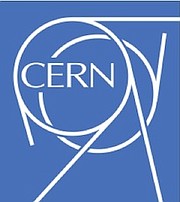SCIENTISTS around the globe are excited as the world’s biggest atom smasher, best known for revealing the Higgs boson - or ‘God particle’ - four years ago, starts whirring again to churn out data that may confirm cautious hints of an entirely new particle.
Such a discovery would all but upend the most basic understanding of physics, experts say.
The European Centre for Nuclear Research (CERN) has in recent months given more power to the machinery in a 17-mile underground circuit along the French-Swiss border known as the Large Hadron Collider (LHC).
In a surprise development in December, two separate LHC detectors each turned up faint signs that could indicate a new particle, and since then theorising has been rife.
“It’s a hint at a possible discovery,” said Cornell University theoretical physicist Csaba Csaki, who isn’t involved in the experiments. “If this is really true, then it would possibly be the most exciting thing that I have seen in particle physics in my career - more exciting than the discovery of the Higgs itself.”
The $4.4 billion LHC has reopened after a winter break to prepare for a restart in early May. CERN scientists are doing safety tests and scrubbing clean the pipes before slamming together large bundles of particles in hopes of producing enough data to clear up that mystery. Firm answers aren’t expected for weeks, if not until an August conference of physicists in Chicago known as ICHEP.
The 2012 confirmation of the Higgs boson culminated a theory first floated decades earlier. The “Higgs” rounded out the Standard Model of physics, which aims to explain how the universe is structured at the infinitesimal level.
The LHC’s Atlas and Compact Muon Solenoid particle detectors in December turned up preliminary readings that suggested a particle not accounted for by the Standard Model might exist at 750 Giga electron Volts. This mystery particle would be nearly four times more massive than the top quark, the most massive particle in the model, and six times more massive than the Higgs, CERN officials say.
The Standard Model has worked well, but has gaps notably about dark matter, which is believed to make up one-quarter of the mass of the universe. Theorists say the December results, if confirmed, could help elucidate that enigma; or it could signal a graviton - a theorised first particle with gravity - or another boson, even hint of a new dimension.
More data is needed to iron out those possibilities and, even then, the December results could just be a blip. But with so much still unexplained, physicists say discoveries of new particles, whether this year or later, may be inevitable as colliders get more and more powerful.
Associated Press





Comments
Use the comment form below to begin a discussion about this content.
Sign in to comment
Or login with:
OpenID